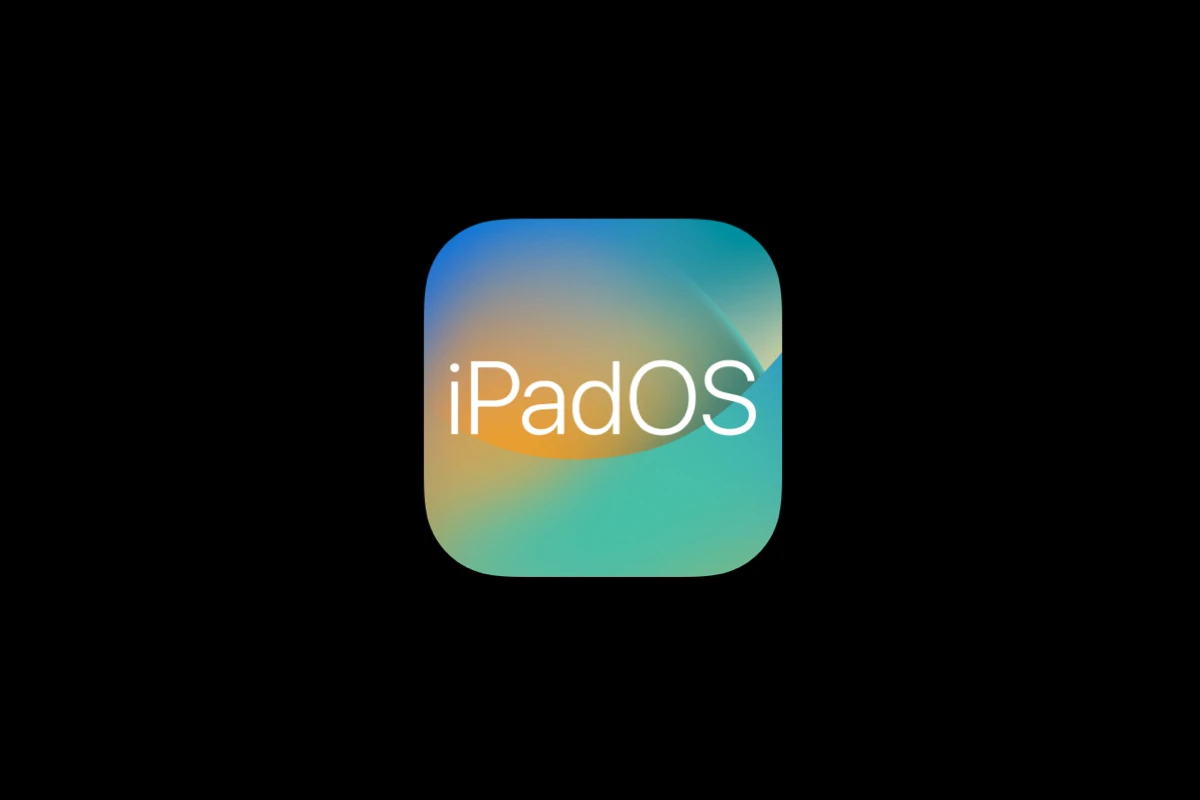Apple is gearing up to unveil iPadOS 19 at WWDC 2025, and early reports suggest it’s one of the most transformative updates in the platform’s history. Drawing inspiration from macOS and the futuristic design of visionOS, iPadOS 19 will introduce sweeping interface changes, AI-powered enhancements, and deeper cross-platform functionality — signaling Apple’s boldest move yet to turn the iPad into a true productivity powerhouse.
iPadOS 19 Preview: Key Features and Improvements Coming
Here’s a detailed look at everything we know so far about the iPadOS 19 update.
Mac-Style Desktop Experience
Menu Bar Integration
iPadOS 19 is rumored to include a persistent Mac-like menu bar that appears when a Magic Keyboard is connected. This change offers users a more familiar desktop-style navigation experience and better aligns the iPad interface with macOS conventions.
Stage Manager 2.0
Apple plans to revamp Stage Manager, improving multitasking and window control. Expect smoother app switching, resizable windows, and more robust external display support — a critical upgrade for users pushing their iPads as laptop replacements.
A Complete Visual Overhaul
Redesigned UI Elements
This update marks the most significant aesthetic shift since iOS 7. Apple will introduce new system icons, refreshed control center visuals, updated menus, and a more modular layout for built-in apps. The goal? A consistent visual language across iOS, iPadOS, macOS, and visionOS.
visionOS-Inspired Design
Expect to see translucent blur effects, floating panels, and layered animations reminiscent of Apple Vision Pro’s visionOS. These changes aim to make the interface feel lighter, more immersive, and more future-facing — while improving usability across all form factors.
Smarter Siri and Apple Intelligence
AI-Driven Siri Enhancements
Siri will undergo its biggest evolution yet in iPadOS 19. Powered by Apple Intelligence, it will offer more contextual understanding, personalized suggestions, and on-screen awareness. Apple is building in hundreds of new Siri actions for both system-level and app-specific use cases.
Conversational Siri
A more natural, back-and-forth voice interaction system is also reportedly in testing. Siri could soon respond to commands like a chatbot, powered by large language models — a strategic response to advances from OpenAI and Google in generative AI assistants.
Seamless Cross-Device Functionality
Tighter macOS Integration
One of Apple’s core goals with iPadOS 19 is to blur the line between iPad and Mac. New universal control enhancements, clipboard sync improvements, and project handoff features will make working between devices more fluid than ever.
Pro App Compatibility Expands
iPadOS 19 will likely expand support for high-performance software like Final Cut Pro and Logic Pro. With M-series iPads increasingly used by creatives, Apple seems committed to pushing the iPad deeper into the pro content creation space.
Developer and Public Beta Timeline
- June 10, 2025: Apple is expected to announce iPadOS 19 during its WWDC keynote.
- Mid-June: Developer beta launches immediately after the keynote.
- Late June/Early July: Public beta becomes available to everyone willing to test the software ahead of full release.
- September 2025: Full public rollout, likely alongside the new iPhone lineup and iOS 19.
Device Compatibility
iPadOS 19 will support:
- iPad Pro 12.9-inch (3rd gen and later)
- iPad Pro 11-inch (1st gen and later)
- iPad Air (3rd gen and later)
- iPad mini (5th gen and later)
- iPad (8th gen and later)
The 7th-gen iPad (2019) will be dropped, likely due to hardware limitations that prevent support for Apple Intelligence features and updated multitasking tools.
Why iPadOS 19 Matters
iPadOS 19 could be a turning point in Apple’s vision for the iPad — transforming it from a tablet with productivity ambitions into a fully-fledged hybrid computing platform. By combining desktop-style features with cutting-edge AI, Apple is not just redesigning the iPad — it’s reimagining how users interact with their devices in an AI-first era. Expect more power, more fluidity, and more reasons than ever to consider an iPad your daily driver.
Key Takeaways
- iPadOS 19 will feature a complete visual redesign that modernizes the iPad interface while making it more user-friendly.
- New Apple Intelligence features will allow iPads to perform more tasks automatically and understand user needs better.
- The update strengthens connections between iPads, iPhones and Macs for a more unified Apple experience.
iPadOS 19 Overview
Apple’s upcoming iPadOS 19 represents a significant design overhaul with improved features and tighter integration across Apple’s ecosystem. The update focuses on visual changes and functional improvements that will change how users interact with their iPads.
Evolution from iPadOS 18
iPadOS 19 brings the biggest design overhaul since iOS 7. Apple has completely redesigned icons, menus, windows, and system buttons to create a fresh visual experience.
The new interface improves navigation and control systems. Users will notice updated app layouts that make better use of the iPad’s screen space.
Key improvements include:
- Redesigned Control Center
- New multitasking gestures
- Updated home screen widgets
- Improved Apple Pencil functionality
The camera app has received special attention with a complete redesign that makes photo and video capture more intuitive. This marks a shift toward treating the iPad as a serious photography tool.
Compatibility with iOS 19 and MacOS 16
iPadOS 19 works seamlessly with iOS 19 and macOS 16, creating a unified experience across all Apple devices. This integration is part of Apple’s strategy to fundamentally change how their software platforms work together.
The shared design language makes switching between iPhone, iPad and Mac feel natural. Files, messages, and tasks now sync almost instantly between devices.
iPadOS 19 supports Handoff features that let users start tasks on one device and finish on another. The Universal Control feature has been enhanced to work more reliably between iPad and Mac.
Apple has also improved cross-device app compatibility. Many iPad apps now scale naturally to iPhone or Mac screens without losing functionality.
New Design Language
iPadOS 19 brings a complete visual refresh that marks the most significant design change since iOS 7 launched in 2013. Apple has crafted a more unified approach that makes moving between iPad, iPhone, and Mac feel natural and cohesive.
Redesign Influences
The new design language in iPadOS 19 draws heavy inspiration from Apple’s hardware aesthetic. The unified design approach creates a seamless experience across all Apple devices. This represents a departure from Jony Ive’s minimalist philosophy, with Alan Dye’s team introducing more depth and tactility.
Apple has added subtle shadows and dimension while maintaining clean lines. The interface feels more responsive with new micro-interactions when users tap buttons or swipe between screens.
Elements now adjust more intelligently based on context and screen size. This adaptive approach ensures the interface remains comfortable whether using Split View, Stage Manager, or full-screen apps.
Text is more readable with improved contrast ratios and slightly larger touch targets, addressing accessibility concerns from previous versions.
Iconography Evolution
Apple has reimagined app icons with a complete visual overhaul that maintains recognizable elements while bringing fresh energy. The new icons feature a more consistent shape with a subtle circular influence.
System icons now share unified stroke weights and rounded corners. This creates visual harmony across the entire operating system. Color palettes have been refined with slightly richer hues that pop on both OLED and LCD displays.
Apple’s first-party apps showcase this new approach most dramatically. Photos, Notes, and Messages icons retain their core identity but appear more cohesive as a family.
Third-party developers have received updated design guidelines to align with the new visual language. Many prominent apps already have test versions implementing these changes.
The redesigned Control Center icons are particularly noteworthy, with clearer visual hierarchy and improved tap targets for common functions.
User Interface Enhancements
iPadOS 19 brings a complete visual transformation to the iPad experience with redesigned elements that create a more cohesive and intuitive interface. The update focuses on modernizing how users interact with their devices while maintaining familiarity.
Menus and Windows Reimagined
The menu system in iPadOS 19 has been fundamentally changed to improve usability. Dropdown menus now feature smoother animations and clearer visual hierarchies, making options easier to spot at a glance.
Windows management has received a major upgrade. The split-view system now supports more flexible arrangements with up to four apps visible at once. Users can:
- Resize windows with more precise controls
- Save custom window arrangements as presets
- Use new gestures to quickly switch between layouts
App windows now have slightly rounded corners and subtle shadows that make them appear to float above the background. This creates a more organized workspace where content boundaries are clear without being distracting.
The dock has been redesigned to be more responsive and shows more contextual information about running apps.
System Buttons and Interaction
iPadOS 19 features completely redesigned system buttons that are more consistent across the platform. Buttons now provide better visual feedback when pressed, with subtle animations that confirm user actions.
The control center has been rebuilt from the ground up. Controls are grouped by function rather than shape, making them easier to find. Brightness and volume sliders are now larger and more precise.
Touch interactions feel more natural with improved haptic feedback. The system responds to different pressure levels in more meaningful ways. For example:
New Touch Gestures:
- Light press: Preview content
- Medium press: Open quick actions
- Firm press: Open full menu options
Apple has also rethought how users navigate between screens, with smoother transitions that maintain spatial awareness.
3D Depth and Visual Effects
iPadOS 19 introduces subtle 3D elements throughout the interface, creating a sense of depth without overwhelming users. App icons now have light 3D characteristics that make them stand out from the background.
The home screen takes advantage of the iPad’s motion sensors to create a gentle parallax effect. As users tilt their device, background elements shift slightly to create dimension.
Notifications slide in with new 3D animations that make them feel like physical objects rather than flat alerts. They stack naturally and respond to touch with realistic physics.
Weather and clock apps now feature dynamic backgrounds with depth effects that change throughout the day. These visual touches add personality while remaining functional.
The system font has been refined for better readability at all sizes, with improved spacing and contrast against various backgrounds.
Apple Intelligence Integration
Apple Intelligence will play a key role in iPadOS 19, bringing smart features that work across apps while protecting user privacy. The system uses on-device processing combined with cloud capabilities to deliver personalized experiences.
AI-Powered Features
iPadOS 19 will expand existing Apple Intelligence capabilities across more apps rather than introducing completely new AI tools. Users can expect smarter text tools that help write and edit documents with just a few taps.
The update includes image generation tools that create pictures based on simple text prompts. These work directly in apps like Notes and Messages without sending your data to third parties.
Privacy protection remains central to Apple’s approach. The system processes information on your iPad when possible, only using the cloud when needed for more complex tasks.
ChatGPT integration will help with complex questions and creative tasks. The system always asks for permission before sending any requests to outside services.
Siri Improvements
Siri gets a major upgrade in iPadOS 19 with smarter, more capable responses to user questions. The assistant can now understand context better, remembering previous questions in a conversation.
Users can ask Siri to summarize long emails or articles with just a voice command. The assistant pulls out key points without missing important details.
The new Siri handles app control more effectively. It can adjust specific settings or perform multi-step tasks that previously required manual input.
ChatGPT integration lets Siri tackle complex questions it couldn’t answer before. When Siri can’t handle a request, it asks permission to send the question to ChatGPT for help.
Memory features allow Siri to recall information from past conversations. This makes interactions feel more natural and less repetitive.
Compatibility and Ecosystem
iPadOS 19 strengthens connections between Apple devices while expanding the range of supported iPad models. The update maintains compatibility with most recent iPads while introducing new ways for these devices to work with Macs and iPhones.
iPad and Mac Synergy
iPadOS 19 takes iPad-Mac connectivity to new heights with expanded Continuity features. Users can now seamlessly move between iPad and Mac workflows without interruption. The new Handoff improvements let you start a task on your iPad and finish it on your Mac with perfect fidelity.
Universal Control gets smarter in iPadOS 19, allowing more natural movement between iPad and Mac screens. Apple has added gesture support that works across both devices.
File sharing between iPad and Mac becomes more intuitive with the redesigned Files app. Documents sync faster and maintain formatting better between macOS and iPadOS than before.
The Stage Manager feature on iPad now works more like its Mac counterpart, with improved window management capabilities. This makes switching between iPad and Mac feel more natural for users of both platforms.
iOS 19 Shared Features
iPadOS 19 and iOS 19 share many key features, creating a more unified experience across Apple devices. Both systems will receive the same AI enhancements, bringing smarter Siri capabilities to iPad users.
Photo editing tools mirror those found on the iPhone 16 series, with new filters and editing options. The shared photo library also syncs more quickly between devices.
Message and notification management works identically across both systems. This means iPad users won’t need to learn different systems when switching between devices.
Not all older iPads will support iPadOS 19’s full feature set. While iOS 19 will support all current devices, some iPads face compatibility limits. The seventh-generation iPad (2019) and second-generation iPad Pro (2017) may miss certain advanced features.
iPadOS 19 is expected to launch alongside iOS 19 in September 2025, following the typical Apple release schedule.
Apple Vision Pro and Mixed Reality
iPadOS 19 brings deeper integration with Apple Vision Pro, expanding how tablets connect with spatial computing. The update focuses on seamless transitions between devices and new ways for developers to create cross-platform experiences.
Integrating Vision Pro Capabilities
The new iPadOS will let iPad users connect directly with Apple Vision Pro in ways never before possible. Apps will be able to share content between iPad and Vision Pro with a simple gesture. This feature makes moving work between devices feel natural and quick.
Users can start a project on iPad and then view it in 3D space using Vision Pro. For example, a CAD design created on iPad can instantly appear as a 3D model in your living room through Vision Pro.
iPadOS 19 also introduces “Spatial Bookmarks” – a way to save specific mixed reality layouts for quick access later. The system remembers how you arranged virtual screens and objects around your space.
Supporting Mixed-Reality Applications
Developers will get new tools to create mixed-reality experiences that work across both iPad and Vision Pro. The updated ARKit framework brings shared spatial anchors that let multiple devices view the same virtual objects in a physical space.
iPad Pro models with LiDAR scanners will gain enhanced room-mapping abilities. These improvements make iPad a powerful tool for planning Vision Pro experiences.
A new “Reality Canvas” feature lets users draw or place objects in mixed reality using iPad as a controller for Vision Pro. This makes the iPad a creative tool for spatial computing.
Games will benefit from new APIs that allow seamless gameplay transitions between flat iPad screens and immersive Vision Pro experiences. Players can start a game on iPad and continue in full mixed reality without losing progress.
Official Releases and Events
Apple follows a predictable schedule for announcing and releasing major software updates. iPadOS 19 will be no exception, with two key events shaping its rollout to the public.
WWDC Announcements
The first official peek at iPadOS 19 will happen at Apple’s Worldwide Developers Conference (WWDC) in June 2025. This yearly event gives developers early access to the new system.
During the keynote, Apple executives will showcase the biggest new features of iPadOS 19. The presentation will highlight improvements to productivity, creativity tools, and any design changes.
Immediately after the keynote, developers will get access to the first beta version. This early build lets app creators test their software and adapt to any API changes.
The beta program will expand in stages:
- Developer Beta: June 2025
- Public Beta: July 2025
The iOS 19 Developer Beta will release alongside iPadOS 19, as Apple typically makes both available at the same time.
September 2025 Launch
The official public release of iPadOS 19 will happen in September 2025. Apple usually states the new system will be available “in the fall,” but September has become the standard release month for major updates.
This release will coincide with new iPad hardware announcements. The timing gives Apple a chance to ship new devices with the latest software pre-installed.
The update will be free for compatible iPad models. Users can install it through Settings > General > Software Update.
Key dates to remember:
- Announcement: June 2025 at WWDC
- Public Release: September 2025
- Compatible Devices: All iPads that supported iPadOS 18
iPadOS 19 represents the biggest design update in years, with significant changes to icons, menus, and system apps compared to recent versions.
Frequently Asked Questions
iPadOS 19 introduces numerous improvements across multitasking, file management, Apple Pencil support, privacy features, performance optimizations, and accessibility options. These updates aim to make iPad usage more efficient and powerful for all users.
What enhancements does iPadOS 19 bring to multi-tasking capabilities?
iPadOS 19 takes multitasking to a new level with a completely redesigned interface. Users can now run up to four apps simultaneously in a grid layout.
The new “App Spaces” feature lets you save specific app combinations for different tasks or projects. This means you can switch between work, creative, and entertainment setups with just one tap.
Enhanced drag-and-drop functionality makes moving content between apps faster and more intuitive. The system also remembers your preferred app pairings and suggests them when relevant.
How does the new Files app in iPadOS 19 improve file management?
The Files app has been rebuilt from the ground up in iPadOS 19. It now supports advanced search filters that can find documents based on content, not just filenames.
Users can create smart folders that automatically organize files based on custom rules. The new column view makes navigating complex folder structures much easier.
Cloud storage integration is now seamless with automatic syncing between local and cloud files. Version history tracking lets you restore previous versions of any document with just a few taps.
Are there any significant changes to the Apple Pencil functionality in iPadOS 19?
Apple Pencil users will love the new “Smart Markup” tool that can recognize and enhance hand-drawn shapes, tables, and diagrams. The system converts rough sketches into professional-looking graphics.
Handwriting recognition has improved dramatically, with near-instant conversion to typed text. New pressure-sensitive brushes in Notes and drawing apps provide more natural artistic expression.
The “Pencil Gestures” feature allows quick actions like selecting text, switching tools, or undoing mistakes with simple pencil movements. This keeps your hands on the pencil rather than constantly tapping the screen.
What are the privacy and security updates included in iPadOS 19?
iPadOS 19 introduces “Privacy Dashboard” which gives a complete overview of how apps access your data. It shows which permissions each app has used in the last seven days.
App Network Monitoring alerts you when apps send data to unexpected servers. This helps catch apps that might be sharing your information without permission.
The new “Secure Notes” feature lets you lock individual notes with Face ID or Touch ID. Local processing for sensitive data reduces how much personal information leaves your device.
How does iPadOS 19 optimize performance for older iPad models?
iPadOS 19 includes “Resource Adaptive Mode” that automatically adjusts system requirements based on your iPad’s capabilities. This ensures smooth performance even on older devices.
Background processes have been streamlined to use less power and memory. Many older iPads will see battery life improvements of up to 20%.
The system now preloads commonly used apps based on your usage patterns. This makes app launching faster, especially on devices with slower storage.
What new accessibility features are available in iPadOS 19?
Voice Control has been expanded with context-aware commands that understand what you’re trying to do. It works with more third-party apps than ever before.
The new “Magnifier Plus” tool works across the entire system to enlarge text and images with more clarity. Custom filters help users with color blindness or light sensitivity.
Sound Recognition can now identify more everyday sounds like specific alarms or appliances. It sends custom notifications when these sounds are detected, helping users who are deaf or hard of hearing.







